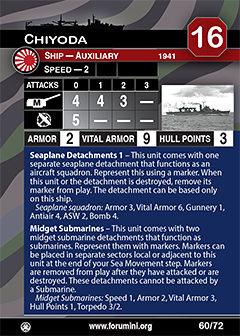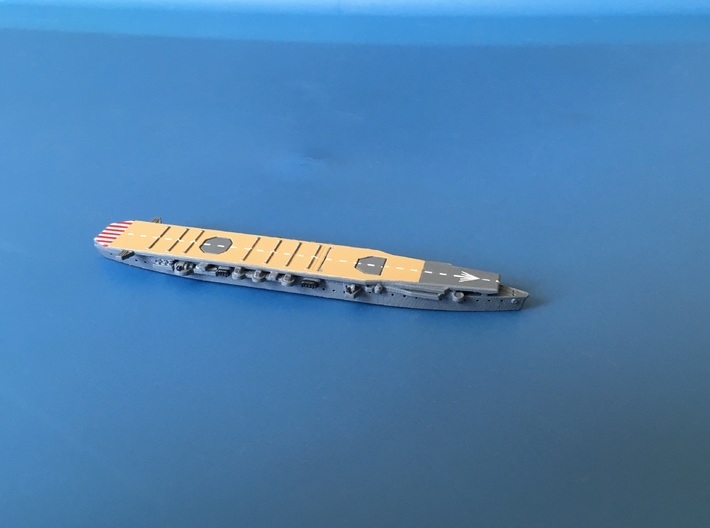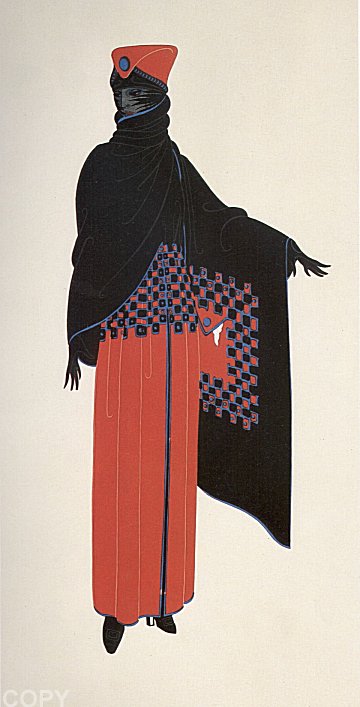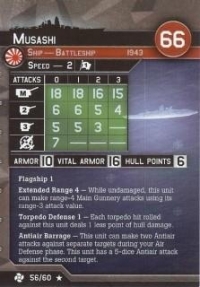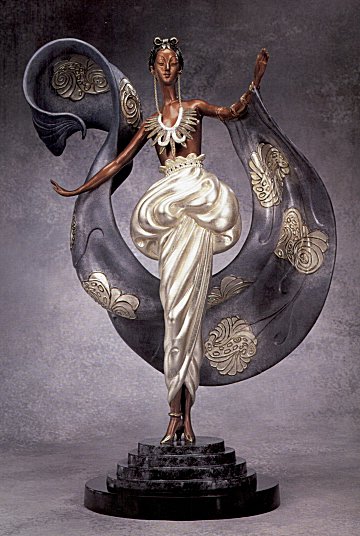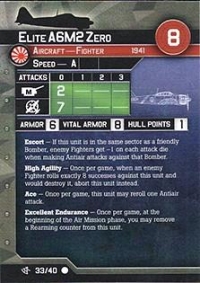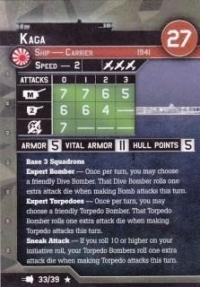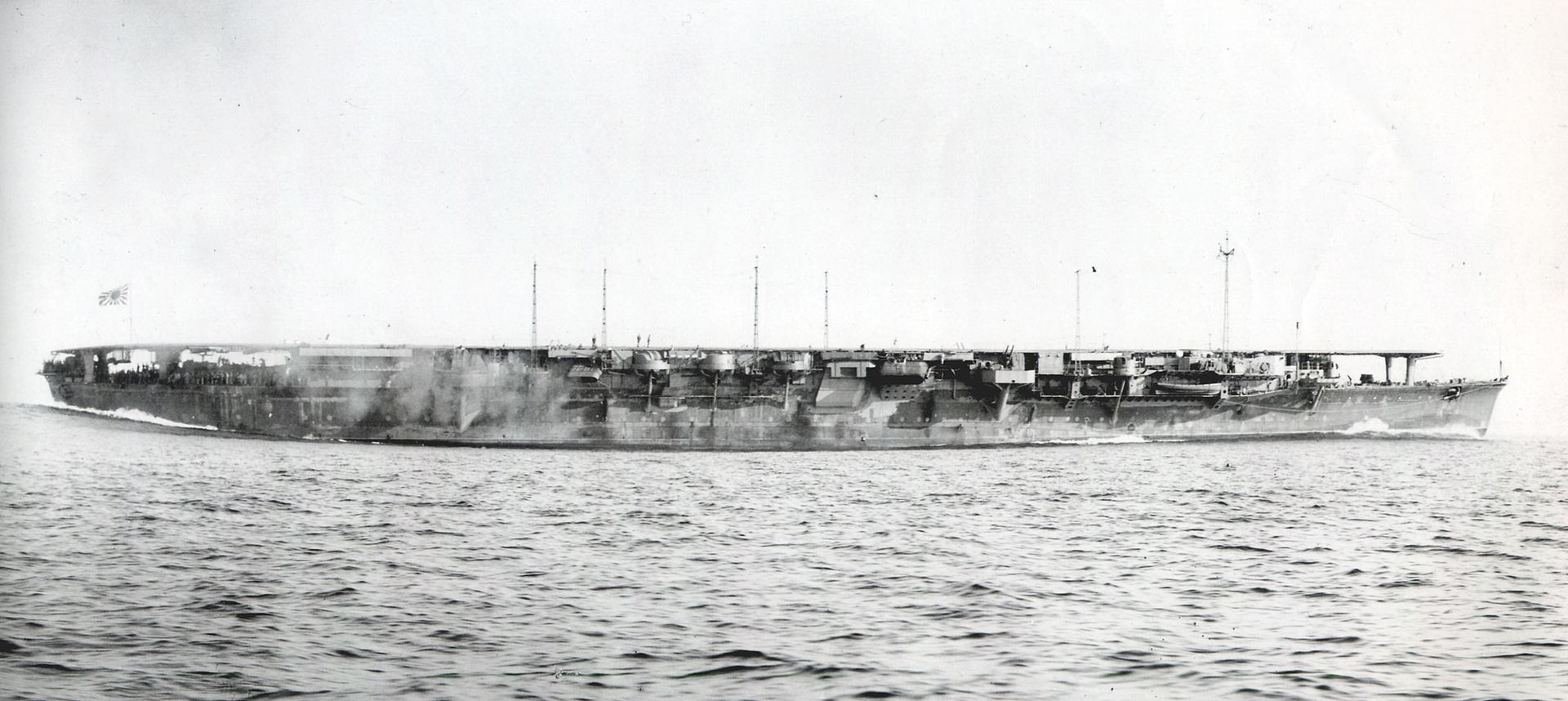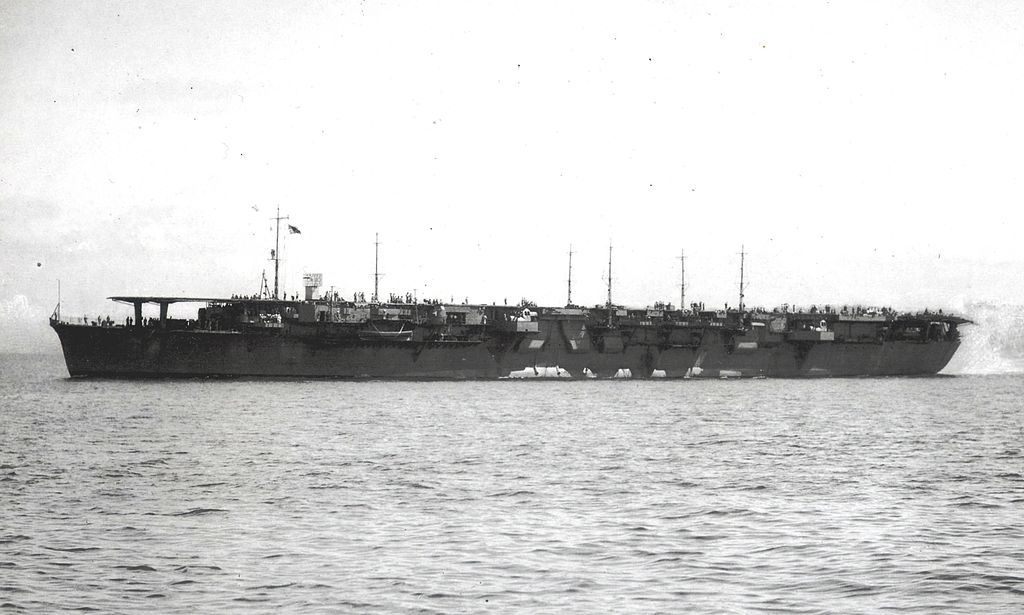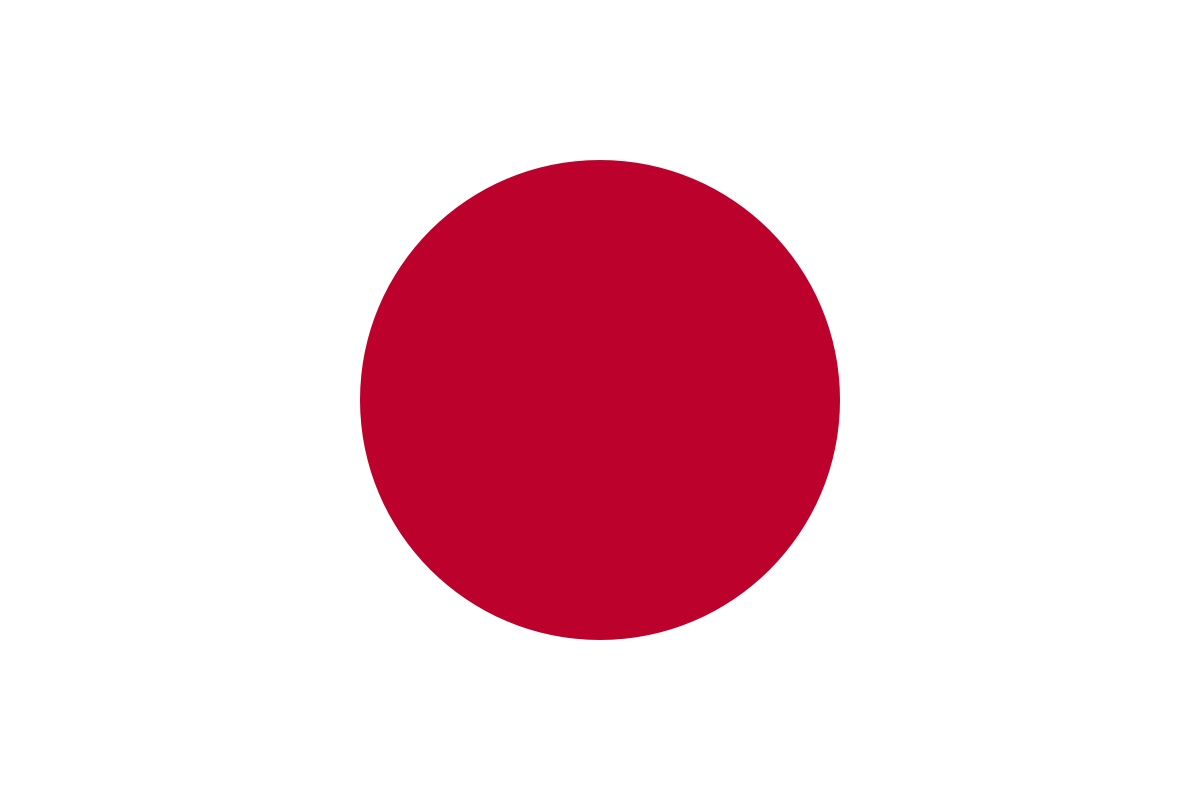Chiyoda
| General Type | Ship |
| Unit Type | Auxiliary |
| Cost | 16 |
| Set | All Hands On Deck |
| Manufacturer | Forumini |
| Available | 1941 |
| Set ID | 60 |
| Game Class Limits | Chitose |
| Country | Japan (Details) |
| Prototype | Chiyoda (Details) |
| Class | Chitose (Details) |
| Armor | 2 |
| Vital | 9 |
| Hull Points | 3 |
| Speed | 2 |
| Primary | 4/4/3/0 |
| AA | 5/0/-/- |
| Special Ability | Seaplane Detachments |
| Special Ability | Midget Submarines |
| Game Rarity | X |
Click to see the details
market
Notes:
Chitose (千歳) was a light aircraft carrier of the Imperial Japanese Navy during World War II. First laid down as a seaplane tender in 1934 at Kure Navy yard, the ship originally carried Kawanishi E7K Type 94 "Alf" and Nakajima E8N Type 95 "Dave" floatplanes. Although it has been speculated that Chitose also carried Type A midget submarines, only her sister ship, Chiyoda had that capability. Chitose saw several naval actions, taking part in the Battle of Midway though seeing no combat there. She was bombed by B-17 Flying Fortresses off Davao, Philippines on 4 January 1942, sustaining negligible damage. She covered the Japanese landings in the East Indies and New Guinea from January–April 1942, and was damaged in the Eastern Solomons in August 1942.
Prototype:
Chiyoda (千代田 "Thousandth-Generation Field") was a light aircraft carrier of the Imperial Japanese Navy during World War II. Originally constructed as the second vessel of the Chitose-class seaplane tenders in 1934, she continued to operate in that capacity during the Second Sino-Japanese War and the early stages of the Pacific War until her conversion into a light aircraft carrier after the Battle of Midway. She was sunk during the Battle of Leyte Gulf by a combination of naval bombers, cruiser shellfire and destroyer-launched torpedoes.
Class History:
The Chitose-class seaplane tenders were procured by the Imperial Japanese Navy under the 2nd Naval Armaments Supplement Programme of 1934 as purpose-built ships, whereas their predecessors were all conversions of merchant or auxiliary ship designs. During the 1930s, the Imperial Japanese Navy made increasing use of naval aviation as scouts for its cruiser and destroyer squadrons. Due to restrictions imposed by the Washington Naval Treaty and London Naval Treaty, the number of aircraft carriers was strictly regulated; however, there was no limitation as to seaplane tenders.
Country:
Japan is an island nation in the Pacific Ocean with dense cities, imperial palaces, mountainous national parks and thousands of shrines and temples. Shinkansen bullet trains connect the main islands of Kyushu (with Okinawa's subtropical beaches), Honshu (home to Tokyo and Hiroshima’s atomic-bomb memorial) and Hokkaido (famous for skiing). Tokyo, the capital, is known for skyscrapers, shopping and pop culture.
Although legend has it that Japan was founded in 660BC, archaeologists agree that settlement in the Japanese archpelago dates back as far as 100,000 years. The Jomon Period (8000-c.300BC) is the earliest that has been studied. It is named after the 'jomon' or cord-marked pattern style of pottery of the period.
Although legend has it that Japan was founded in 660BC, archaeologists agree that settlement in the Japanese archpelago dates back as far as 100,000 years. The Jomon Period (8000-c.300BC) is the earliest that has been studied. It is named after the 'jomon' or cord-marked pattern style of pottery of the period.
Item created by: gdm
on 2015-09-03 16:42:35
Last edited by: gdm on 2019-12-05 18:08:27
If you see errors or missing data in this entry, please feel free to log in and edit it. Anyone with a Gmail account can log in instantly.
Last edited by: gdm on 2019-12-05 18:08:27
If you see errors or missing data in this entry, please feel free to log in and edit it. Anyone with a Gmail account can log in instantly.


